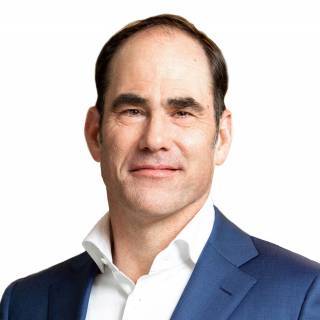Our latest views on the major central banks
Central banks are waiting to assess the full impact of Trump's tariffs before making any big moves
Our policy rate forecasts

Federal Reserve
President Trump wants the Fed to cut interest rates, but those demands are falling on deaf ears as officials try to gauge the inflationary impact from his trade policies amid ongoing labour market strength. Higher tariffs look set to lift prices while port operators and logistics firms are warning of a potential supply crunch that risks amplifying the near-term inflation threat. As such, the Fed is in “wait and see” mode, with Chair Jay Powell warning that its “obligation is to keep longer-term inflation expectations well anchored and to make certain that a one-time increase in the price level does not become an ongoing inflation problem”.
However, the scale of the slump in consumer and corporate sentiment to levels consistent with recession suggests that trade deals and tax cuts need to be agreed quickly to prevent a stagflation-infused downturn. Nonetheless, we expect that shelter-related disinflation will give the Fed room to respond with rate cuts later in the year. The market favours a July start point, but we see the risk for slippage, and it may be that the Fed kicks things off with a 50bp cut in September, just as it did in 2024.
European Central Bank
Assuming that trade tensions will not fade away any time soon and that the coming weeks will show the first fallout for the eurozone economy, the risk for the ECB of undershooting its inflation target will increase. In fact, we think that after the April rate cut, the ECB’s work is not yet done. On the contrary, the recent drop in energy prices and the stronger euro exchange rate have actually increased disinflationary pressures in the eurozone, leaving more room for the ECB to continue cutting rates.
At the April press conference, ECB President Christine Lagarde may not have been as straightforward and explicit as her predecessor Mario Draghi, but stressed the ECB’s "readiness" and "agility". A clear hint that the ECB will not shy away from cutting rates further. The U-turn on fiscal policy in Germany and the plans to increase defence spending in Europe are expected to enhance the eurozone's long-term economic outlook. This improvement may eventually prompt the European Central Bank to reconsider the extent of its rate cuts. But for now, the direction of travel is clear: we expect two more cuts by late summer.
Bank of England
There’s a growing expectation within financial markets that the Bank of England will be forced to pick up the pace of rate cuts. Ahead of the Bank’s May meeting, markets have been pricing three cuts at the next four meetings, which would mark an acceleration from the quarterly 25bp moves we’ve seen so far. We have some sympathy with that view, given that services inflation – a key metric for the BoE – should end the quarter closer to 4% than 5%, where it has hovered for some time.
But we’re less convinced that tariffs and the financial volatility we saw in April are enough of a catalyst for the Bank to speed things up. Britain is less susceptible to the direct hit of US tariffs, even if wider economic weakness in America would be a bigger deal. Meanwhile, headline inflation is set to rise to 3.5% later this year, which, though driven primarily by energy prices, the Bank is concerned might prompt a longer period of above-target inflation, like we saw after the 2022 gas price shock. Those concerns look overblown, but the BoE’s cautious approach to easing suggests the path of least resistance is to keep cutting rates once per quarter this year.
Bank of Japan
The Bank of Japan’s latest quarterly outlook report showed a sizable downside revision of GDP for FY2025. At the press conference, Governor Kazuo Ueda also stressed extreme uncertainty regarding trade and the BoJ’s growth outlook. This was clearly the main reason for the decision to keep rates steady. The BoJ seems to be struggling to anticipate how US trade policy will evolve and how tariff rates will settle. The central bank's policy decision ahead will depend heavily on this.
We believe that despite inflation being above 3%, the BoJ will maintain its wait-and-see stance until any trade agreements between Japan and the US are finalised. Given the US 90-day pause on 'reciprocal' tariffs, the earliest the BoJ can start raising rates again is July, with the big assumption being that bilateral talks will lead to a reduction in tariffs from current levels. We also think there is a possibility that the BoJ's outlook for GDP and CPI could be revised upwards if progress is made in the tariff negotiations.
This publication has been prepared by ING solely for information purposes irrespective of a particular user's means, financial situation or investment objectives. The information does not constitute investment recommendation, and nor is it investment, legal or tax advice or an offer or solicitation to purchase or sell any financial instrument. Read more
Download
Download article
8 May 2025
ING Monthly: The world is caught like a deer in the headlights This bundle contains 14 Articles


